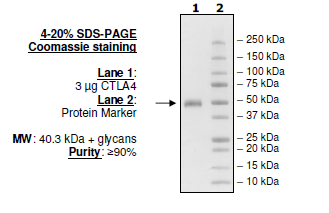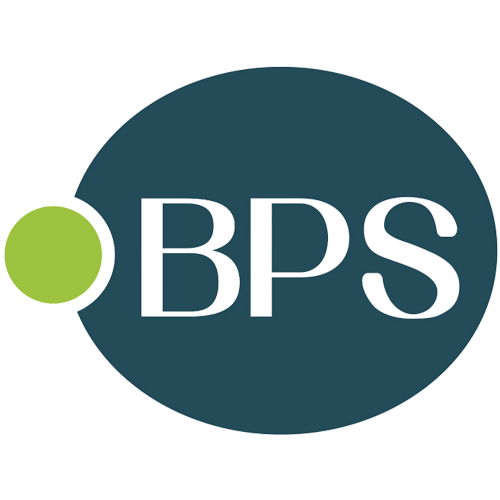![CD152 [CTLA-4] (human) (rec.) (untagged) (Prod. No. AG-40B-0232) binds to the receptor CD80 (human):Fc (mouse) (rec.) (Prod. No. CHI-HF-211CD80). Method: CD152 [CTLA-4] (human) (rec.) (untagged) is coated on an ELISA plate at 1 microg/ml overnight at 4°C. CD80 (human):Fc (mouse) (rec.) (blue line) or a control mouse Fc (Prod. No. AG-35B-0008) (grey line) is incubated (starting at a concentration of 8,000 ng/ml with a twofold serial dilution) during one hour at RT and the interaction is then detected using a goat anti-mouse-(HRP). CD152 [CTLA-4] (human) (rec.) (untagged) (Prod. No. AG-40B-0232) binds to the receptor CD80 (human):Fc (mouse) (rec.) (Prod. No. CHI-HF-211CD80). Method: CD152 [CTLA-4] (human) (rec.) (untagged) is coated on an ELISA plate at 1 microg/ml overnight at 4°C. CD80 (human):Fc (mouse) (rec.) (blue line) or a control mouse Fc (Prod. No. AG-35B-0008) (grey line) is incubated (starting at a concentration of 8,000 ng/ml with a twofold serial dilution) during one hour at RT and the interaction is then detected using a goat anti-mouse-(HRP).](https://adipogen.com/pub/media/catalog/product/a/g/ag-40b-0232-binding_assay-450px.jpg)
CD152 [CTLA-4] (human) (rec.) (untagged) (Prod. No. AG-40B-0232) binds to the receptor CD80 (human):Fc (mouse) (rec.) (Prod. No. CHI-HF-211CD80). Method: CD152 [CTLA-4] (human) (rec.) (untagged) is coated on an ELISA plate at 1 microg/ml overnight at 4°C. CD80 (human):Fc (mouse) (rec.) (blue line) or a control mouse Fc (Prod. No. AG-35B-0008) (grey line) is incubated (starting at a concentration of 8,000 ng/ml with a twofold serial dilution) during one hour at RT and the interaction is then detected using a goat anti-mouse-(HRP).
CD152 [CTLA-4] (human) (rec.) (untagged)
AG-40B-0232
Protein IDP16410
Product group Proteins / Signaling Molecules
Overview
- SupplierAdipoGen Life Sciences
- Product NameCD152 [CTLA-4] (human) (rec.) (untagged)
- Delivery Days Customer10
- CertificationResearch Use Only
- Concentration1 mg/ml
- Estimated Purity>95%
- Protein IDP16410
- Protein NameCytotoxic T-lymphocyte protein 4
- Scientific DescriptionCD152 (Cytotoxic T-lymphocyte-associated protein 4; CTLA-4) is an inhibitory receptor belonging to the CD28 immunoglobulin subfamily, expressed primarily by T cells. Its ligands, CD80 and CD86, are typically found on the surface of antigen-presenting cells and can either bind CD28 or CTLA-4, resulting in a costimulatory or a co-inhibitory response, respectively. Because of its dampening effect, CTLA-4 is a crucial regulator of T cell homeostasis and self-tolerance. While CD28 promotes T cell activation and proliferation, CTLA-4 is reported to dampen T cell responses through a variety of mechanisms. Prior to activation, conventional T cells (Tconv) express low levels of CTLA-4, predominantly in intracellular compartments. Upon activation, CTLA-4 expression is upregulated and becomes increasingly detectable on the cell surface. In Tregs on the other hand, transmembrane CTLA-4 is constitutively expressed and plays an important role in Treg homeostasis and function. In general, T cell CTLA-4 is largely constrained to intracellular expression although some surface expression may be detectable owing to the rapid, continuous shuttling of CTLA-4 between intracellular compartments and the plasma membrane. Recently, CTLA-4 has been studied in dendritic cells and tumors, showing that CTLA-4 plays nonredundant and critical roles in thymic development, T cell priming, peripheral tolerance, and a variety of other critical immunoregulatory functions as an immune checkpoint in Immuno-oncology research. - Recombinant protein. Human CD152 [CTLA-4] (aa 36-161) is untagged. Binds to human CD80. Source: HEK 293 cells. Lyophilized. Contains PBS. CD152 (Cytotoxic T-lymphocyte-associated protein 4; CTLA-4) is an inhibitory receptor belonging to the CD28 immunoglobulin subfamily, expressed primarily by T cells. Its ligands, CD80 and CD86, are typically found on the surface of antigen-presenting cells and can either bind CD28 or CTLA-4, resulting in a costimulatory or a co-inhibitory response, respectively. Because of its dampening effect, CTLA-4 is a crucial regulator of T cell homeostasis and self-tolerance. While CD28 promotes T cell activation and proliferation, CTLA-4 is reported to dampen T cell responses through a variety of mechanisms. Prior to activation, conventional T cells (Tconv) express low levels of CTLA-4, predominantly in intracellular compartments. Upon activation, CTLA-4 expression is upregulated and becomes increasingly detectable on the cell surface. In Tregs on the other hand, transmembrane CTLA-4 is constitutively expressed and plays an important role in Treg homeostasis and function. In general, T cell CTLA-4 is largely constrained to intracellular expression although some surface expression may be detectable owing to the rapid, continuous shuttling of CTLA-4 between intracellular compartments and the plasma membrane. Recently, CTLA-4 has been studied in dendritic cells and tumors, showing that CTLA-4 plays nonredundant and critical roles in thymic development, T cell priming, peripheral tolerance, and a variety of other critical immunoregulatory functions as an immune checkpoint in Immuno-oncology research.
- Storage Instruction-20°C,2°C to 8°C
- UNSPSC12352202

![CD152 [CTLA-4] (human) (rec.) (His) (Prod. No. AG-40B-0228) binds to the receptor CD80 (human): Fc (mouse) (rec.) (Prod. No. CHI-HF-211CD80). Method: CD80 (human): Fc (mouse) (rec.) (Prod. No. CHI-HF-211CD80) is coated on an ELISA plate at 1 microg/ml overnight at 4°C. CD152 [CTLA-4] (human) (rec.) (His) (Prod. No. AG-40B-0228) (red line) or a control protein (His) (green line) is incubated (starting at a concentration of 8,000 ng/ml with a two-fold serial dilution) during one hour at RT and the interaction is then detected using an anti-His-(HRP).](https://adipogen.com/pub/media/catalog/product/a/g/ag-40b-0228-binding_assay-400px.jpg)

